The great Ganges River, the lifeline of Indian civilization for millennia, understandably holds immense importance in Hinduistic tradition. So much so that devout Hindus promptly undertake onerous pilgrimages from throughout India to wash their spirits in the otherwise most polluted river in the world. That was the problem faced by hundreds of thousands of Indian workers imported by the British to Mauritius: some 2,000 miles of ocean separating them from the motherland and its sacred river. And their solution: bring the Ganges with them.
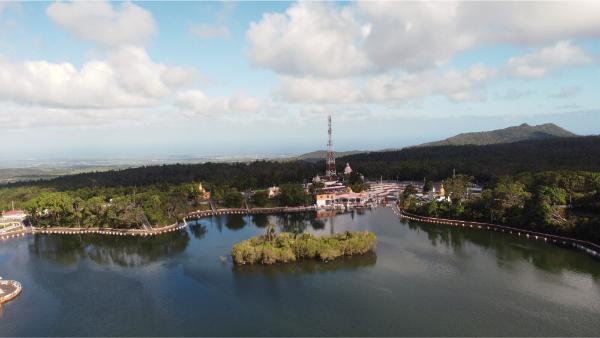
In a crater lake secluded amid the scenic mountains of southern Mauritius, lies the tranquil lake of Grand Bassin. An entrepreneurial ex-indentured laborer named Pandit Sanjibonlal returned to Mauritius in 1866 and made it big with a shipload of Indian textiles. Among other real estate, he invested his newly acquired fortune in buying a lakeside property at Grand Bassin. He then funded the construction of a Shiva temple and moved on to build its reputation as a sacred site.
Several fables popped up to establish the lake’s link with the holy Indian river. In the most successful one, a revered priest going by Shri Jhummon Giri Gosagne Napal dreamed of the goddess Ganga Mata (the personification of the Ganges) filling up the lake. In 1972—in an act of corresponding wastefulness to Orthodox Christians jetting the Holy Fire around the world instead of using a lighter—Hindu priests transported a load of actual contaminated water from the Ganges and poured it into the pristine mountain lake, thus cementing the symbolic connection.
Today the Grand Bassin has been renamed Ganga Talao (literally the Ganges Lake) and is venerated as one of the holiest Hindu sites outside of the Indian subcontinent. During the weeks preceding the annual festival of Maha Shivaratri, February into early March, hundreds of thousands of Mauritian Hindus, often on foot and even barefoot, embark on a pilgrimage to the lake.
Since we happened to be in Mauritius during those days, this event sounded like an intriguing option for a day trip. On the last morning before the Great Night of Shiva, the festival’s culmination, we mounted our scooter and rode off to Grand Bassin.
The weather forecast was ominous and the sky leaden, but it only drizzled a little during the trip. Gridlocks formed at bottlenecks closer to the lake, and police diverted the traffic via detours. Besides cars, pedestrian pilgrims with banners and push carriages abetted the congestion. On our two wheels, we meandered briskly through the jam.
Crowds arrived in private cars and busloads at a nearly full parking lot 2 km before the site. The main parking lot beside the site was long packed. The rain broke out just as we found a corner to tuck our bike.
We sought shelter in a covered area before a volunteer kitchen by the parking lot. They cooked in huge cauldrons and appealed for donations in the typical bold manner of Hindu temples. Folks queued up for the free nosh, and we did too. Content of seeing foreign visitors, the other waiters kindly pushed us ahead of the queue to the counter. They served halwa and chai. We started with dessert and had Biriyani for the main course later, after we found out that this was but one of many volunteer kitchens preparing all sorts of delicious meals around the festival.
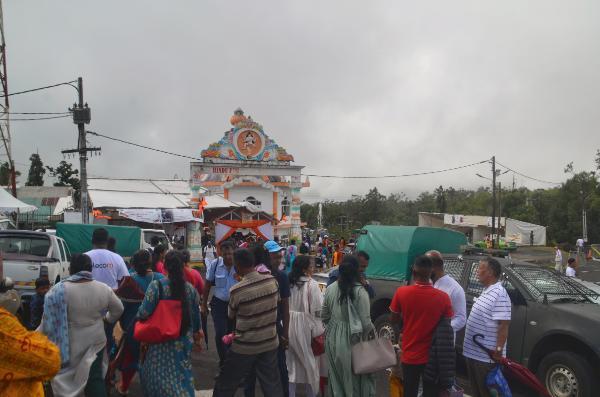
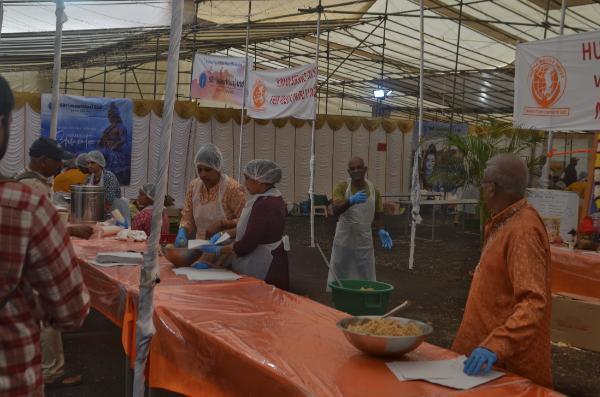
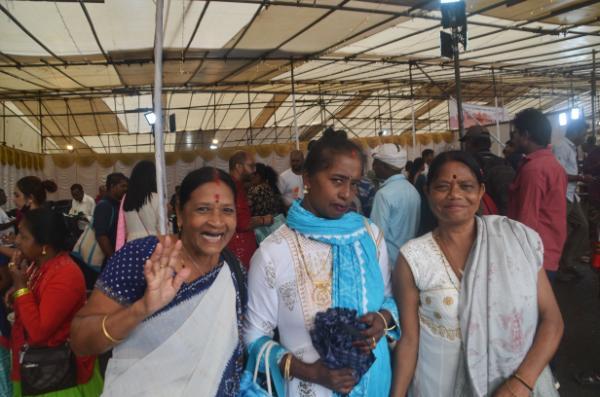
When the rain subsided to a drizzle, we set off to explore and wonder. We began with the temple of Hanuman the monkey god, standing atop the hillock on the south lakeshore. An endless procession of believers were climbing the stairway both ways. The temple was a small, polygonal, glass-walled room with an effigy of the divine primate in its midst. The worshippers took their shoes off, rang the bell at the entrance, and entered to seek his simian blessings. On the altars outside the temple, they offered incense, apples, coconuts, and most appropriately, bananas.
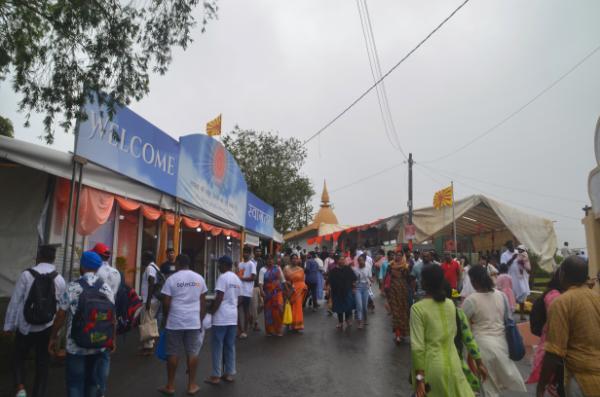
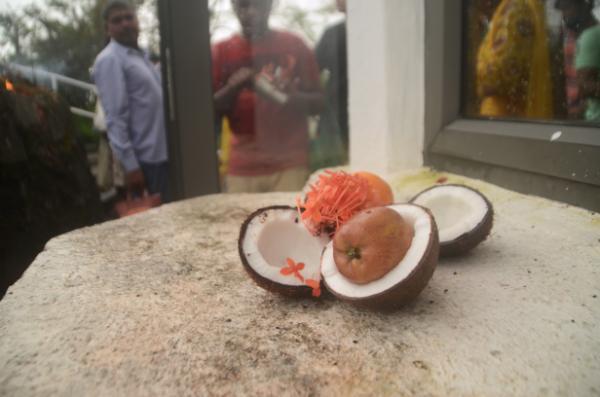
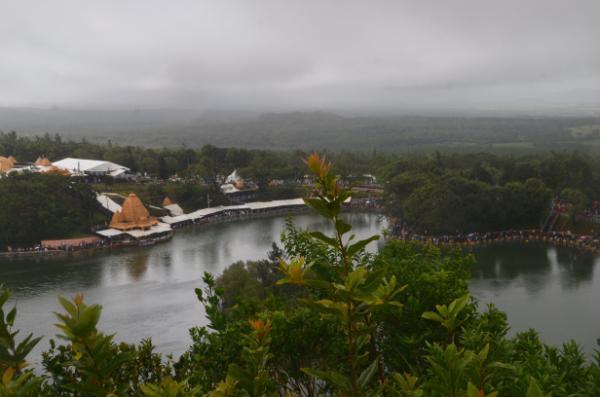
We took the view in. The lake nestled below amid the lush landscape, while the two gigantic statues of Shiva stood out from the rolling mists. And we headed back down. By the hill foot, we met a Nepali pilgrim who stopped us for shelfies. I assume he must have been one of many religious tourists present at the event.
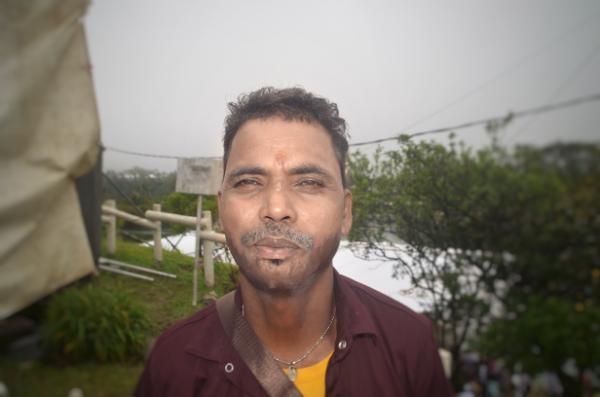
While the rain went on and off for the rest of the day, we walked around the covered lake’s periphery. Pilgrims with variegated, vibrant outfits and painted foreheads crowded the promenade. Amid an all-pervading scent of incense and chants and sermons that boomed out of megaphones at the successive temples, they queued up before the numerous shrines and altars to place their offerings. The entire lakeshore was turned opaque with spilled coconut juice. The only non-Hindus present were a handful of tourists and a few Creoles who stayed in tents and worked as cleaners and security guards.
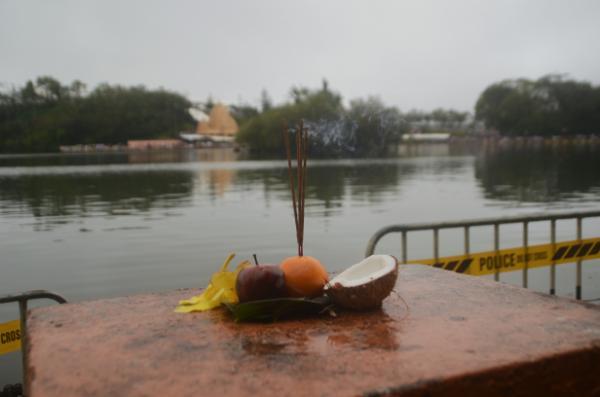
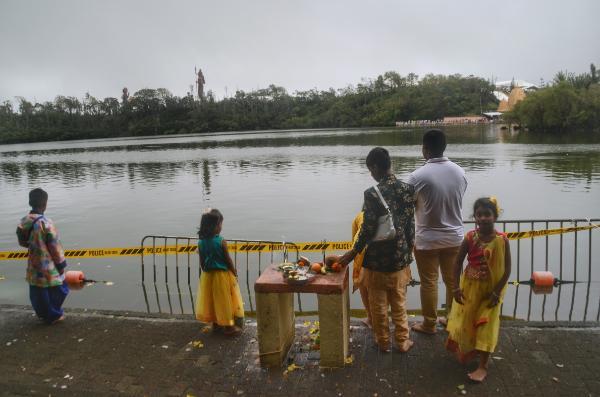
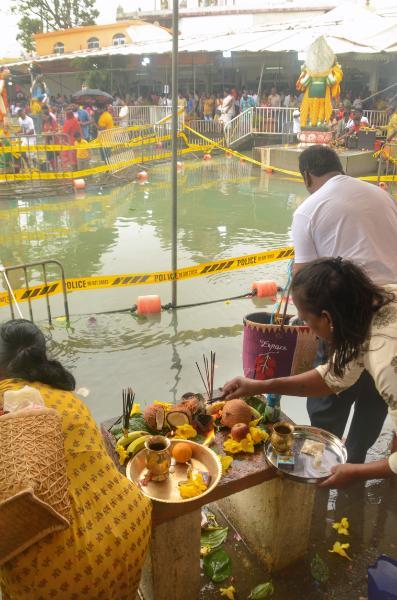
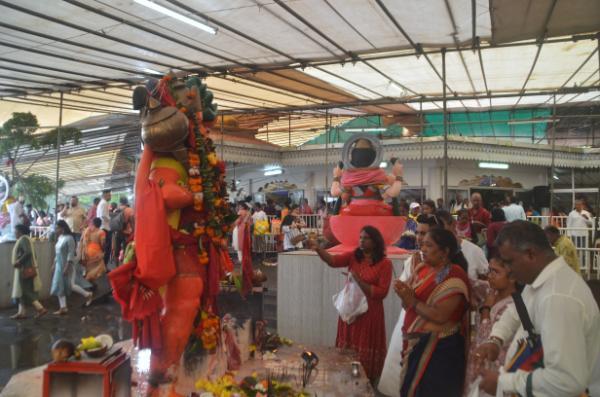
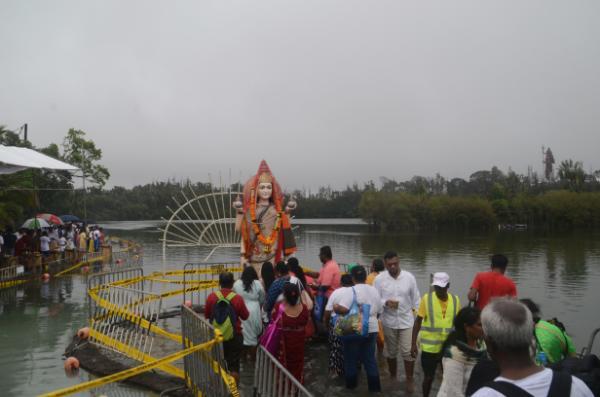
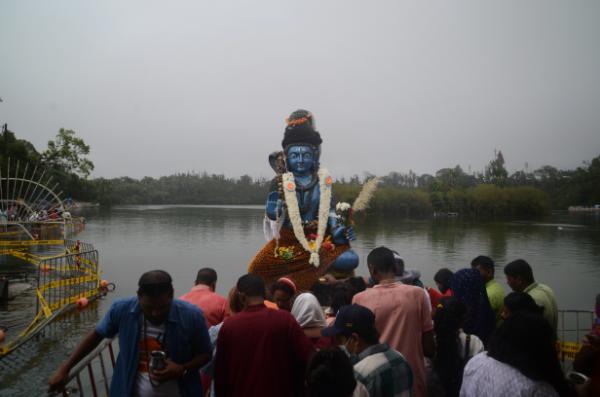
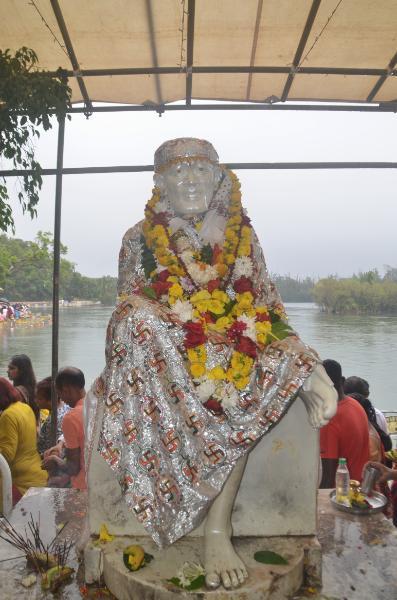
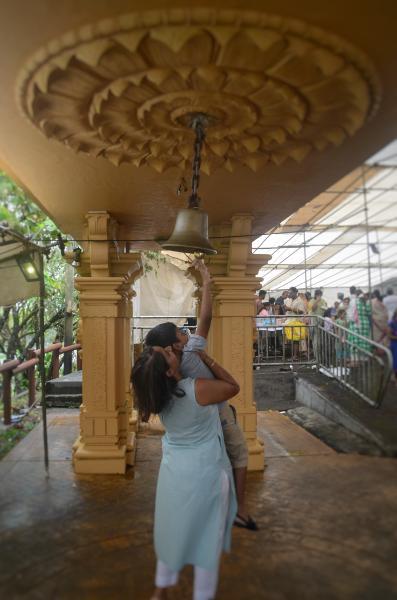
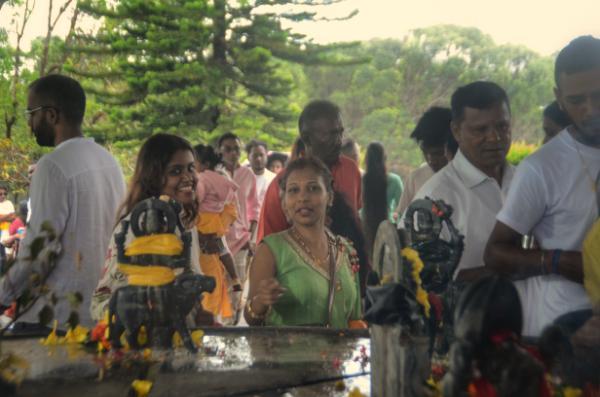
We ended up at the northern parking lot, below the Shiva statues, where the volunteer kitchens were concentrated. After lunch, we slowly headed back home to Mahebourg.
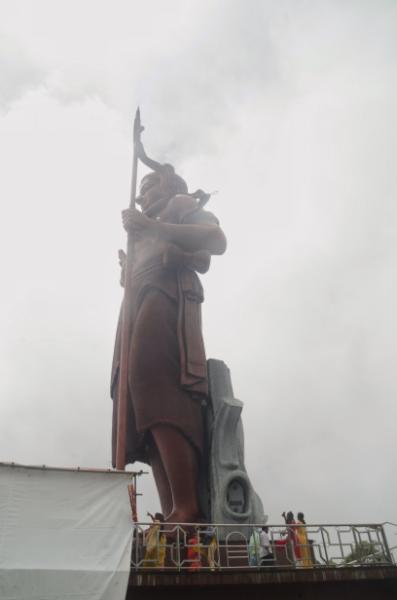
Photos
View (and if you want use) all my photographs from Grand Bassin in higher resolution.
Affiliation disclosure: By purchasing goods or services via the links contained in this post, I may be earning a small commission from the seller's profit, without you being charged any extra penny. You will be thus greatly helping me to maintain and keep enriching this website. Thanks!
Accommodation and activities in Mauritius
Stay22 is a handy tool that lets you search for and compare stays and experiences across multiple platforms on the same neat, interactive map. Hover over the listings to see the details. Click on the top-right settings icon to adjust your preferences; switch between hotels, experiences, or restaurants; and activate clever map overlays displaying information like transit lines or concentrations of sights. Click on the Show List button for the listings to appear in a list format. Booking via this map, I will be earning a small cut of the platform's profit without you being charged any extra penny. You will be thus greatly helping me to maintain and keep enriching this website. Thanks!
